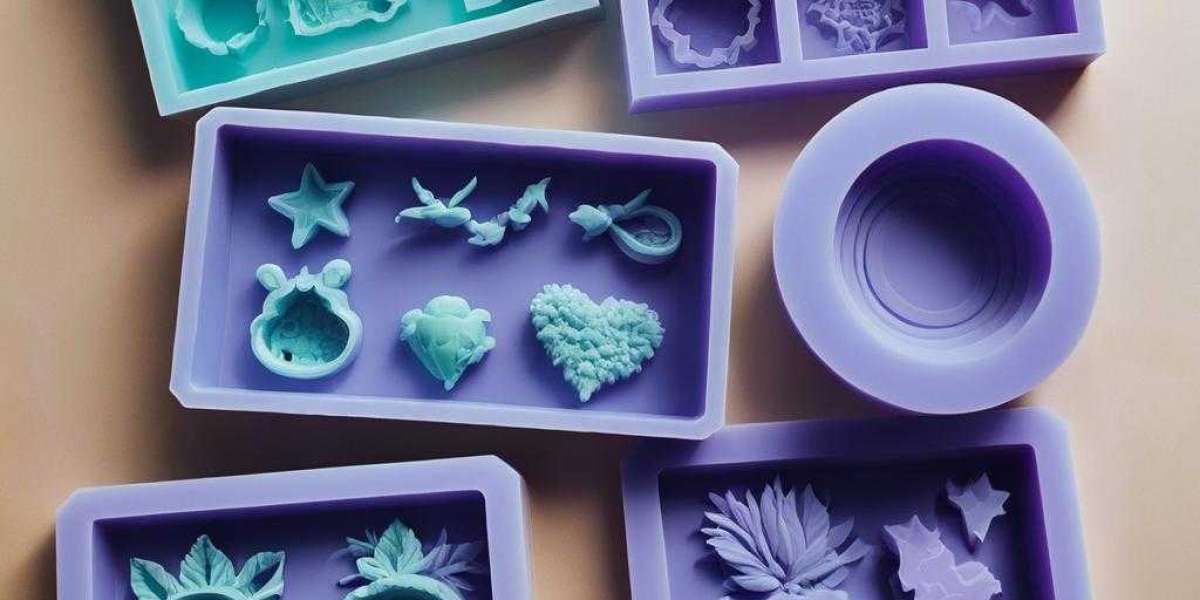Understanding Rubber Mold Materials
Rubber molds are made from specialized materials that allow for precise and accurate casting. Understanding the different types of rubber mold materials is crucial for achieving the desired results in your crafting projects.
One common material used for rubber molds is silicone rubber. Silicone rubber molds offer flexibility and durability, making them ideal for intricate and detailed designs. Another popular option is urethane rubber, which provides excellent dimensional stability and resistance to wear and tear.
When choosing a rubber mold material, consider factors such as the complexity of your design, the desired level of detail, and the type of material you will be casting. Different materials have different properties and may be better suited for specific applications.
Choosing the Right Mold Design
Selecting the appropriate mold design is essential for achieving precision in your casting projects. There are various factors to consider when choosing a mold design, including the shape and size of the object you are casting, the number of cavities needed, and the type of material you will be using.
One common mold design is the two-part mold, which consists of a mold box divided into two halves. This design allows for easy removal of the casting and is suitable for objects with complex shapes or undercuts. Another option is the block mold, which is a simple and cost-effective design for casting objects with flat or slightly curved surfaces.
Additionally, consider the venting and gating system of your mold design. Proper venting helps eliminate trapped air bubbles, while an efficient gating system ensures smooth and uniform filling of the mold cavity.
Take your time to analyze your project requirements and consult resources or experts if needed to choose the right mold design for optimal results.
Precision Casting Techniques
Achieving precision in your casting requires employing various techniques to ensure accurate replication of your original model. Here are some precision casting techniques to consider:
1. Proper Mold Preparation: Before casting, ensure that your mold is clean and free from any debris or residue. This helps prevent imperfections in the final cast.
2. Accurate Measurements: Take precise measurements of your original model to ensure accurate replication. Use calipers or other measuring tools to capture all dimensions accurately.
3. Controlled Mixing: Follow the manufacturer's instructions when mixing your casting material. Maintaining the correct ratios and mixing thoroughly helps prevent inconsistencies in the cast.
4. Degassing: Removing air bubbles from your casting material is crucial for achieving a smooth and bubble-free finish. Consider using a vacuum chamber or degassing equipment to eliminate trapped air.
5. Slow and Controlled Pouring: Pour your casting material slowly and evenly into the mold to avoid creating air pockets or disturbing the mold surface. A controlled pouring technique helps ensure uniform filling of the mold cavity.
By implementing these precision casting techniques, you can enhance the quality and accuracy of your castings.
Tips for Maintaining Mold Accuracy
To maintain the accuracy and longevity of your rubber molds, it's essential to follow proper maintenance practices. Here are some tips to help you keep your molds in optimal condition:
1. Clean after Use: Clean your molds thoroughly after each use to remove any residue or casting material. Use mild soap and water or a specialized mold cleaner, depending on the type of mold.
2. Store Properly: Store your rubber molds in a cool, dry place away from direct sunlight and extreme temperatures. Avoid placing heavy objects on top of the molds to prevent deformation.
3. Use Release Agents: Apply a suitable release agent before each casting to facilitate easy removal of the cured material from the mold. This helps prevent damage to the mold and ensures smooth release.
4. Inspect for Damage: Regularly inspect your molds for any signs of wear, tear, or damage. Cracks, tears, or distorted areas can affect the accuracy of your castings. Replace or repair damaged molds as needed.
5. Follow Manufacturer's Guidelines: Always refer to the manufacturer's instructions and guidelines for your specific mold material. Each material may have different care requirements.
By following these tips, you can extend the lifespan of your rubber molds and maintain their accuracy for consistent and high-quality castings.
Creative Applications of Rubber Molds
Rubber molds offer endless creative possibilities beyond traditional crafting projects. Here are some unique applications of rubber molds to inspire your creativity:
1. Jewelry Making: Use rubber molds to create custom jewelry pieces with intricate designs. From earrings and pendants to bracelets and rings, rubber molds allow you to experiment with various shapes and patterns.
2. Sculpture Replication: Replicate sculptures or statues using rubber molds to create multiple copies. This technique is commonly used in art restoration or to produce limited-edition replicas.
3. Home Decor: Design and cast custom home decor items like candle holders, coasters, or decorative tiles using rubber molds. Personalize your living space with unique and handcrafted pieces.
4. Model Making: Rubber molds are widely used in model making to create realistic textures and details. Whether you're building scale models of vehicles, architecture, or figures, rubber molds can help you achieve precise and accurate reproductions.
5. Soap and Candle Making: Add intricate designs and textures to your homemade soaps and candles using rubber molds. Create beautiful and unique products that stand out.
Let your imagination run wild and explore the various creative applications of rubber molds. The versatility of this technique opens up a world of possibilities for your crafting endeavors. Shop Now Rubber Candle Molds.




